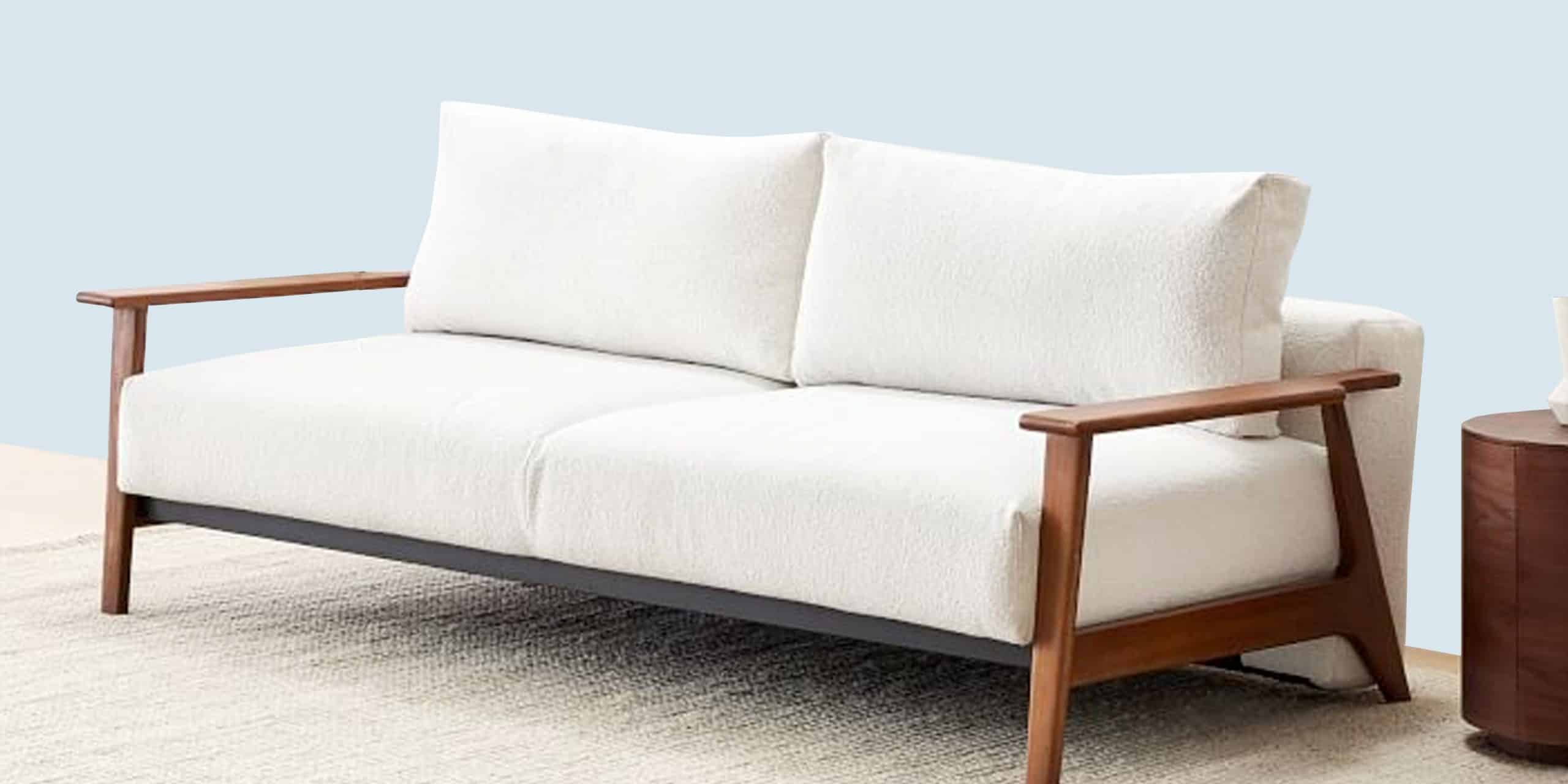Indoor trees aren’t just trendy decor—they’re mood lifters, air refreshers, and space-transforming powerhouses. Whether you want a leafy giant to command attention or a chill, low-maintenance green buddy that asks for little but gives a lot, there’s an indoor tree for you. Some purify the air, some bring a jungle vibe to a dull room, and others just make you feel good when you look at them.
Let’s dig into some of the best indoor tree plants, what makes each one special, and what they need to thrive.
1. Ficus lyrata (Fiddle-Leaf Fig)
- STYLISH LIVE PLANT: Bring home a beautiful Fiddle Leaf Fig live...
- GORGEOUS HOME DECOR: Fiddle Leaf Fig is a decorative house plant...
- UNIQUE GIFT: Surprise your loved ones with a live Fiddle Leaf Fig...
- PROMOTES WELLNESS: Plants make us happy. They give us life, fresh...
- AIR PURIFICATION: Fiddle Leaf Fig plants are known as natural air...
The Fiddle-Leaf Fig is basically the diva of indoor plants. It’s got those oversized, deep green leaves that practically demand attention, making it a go-to for plant lovers and interior designers alike. Put one in a room, and suddenly, everything feels more put together.
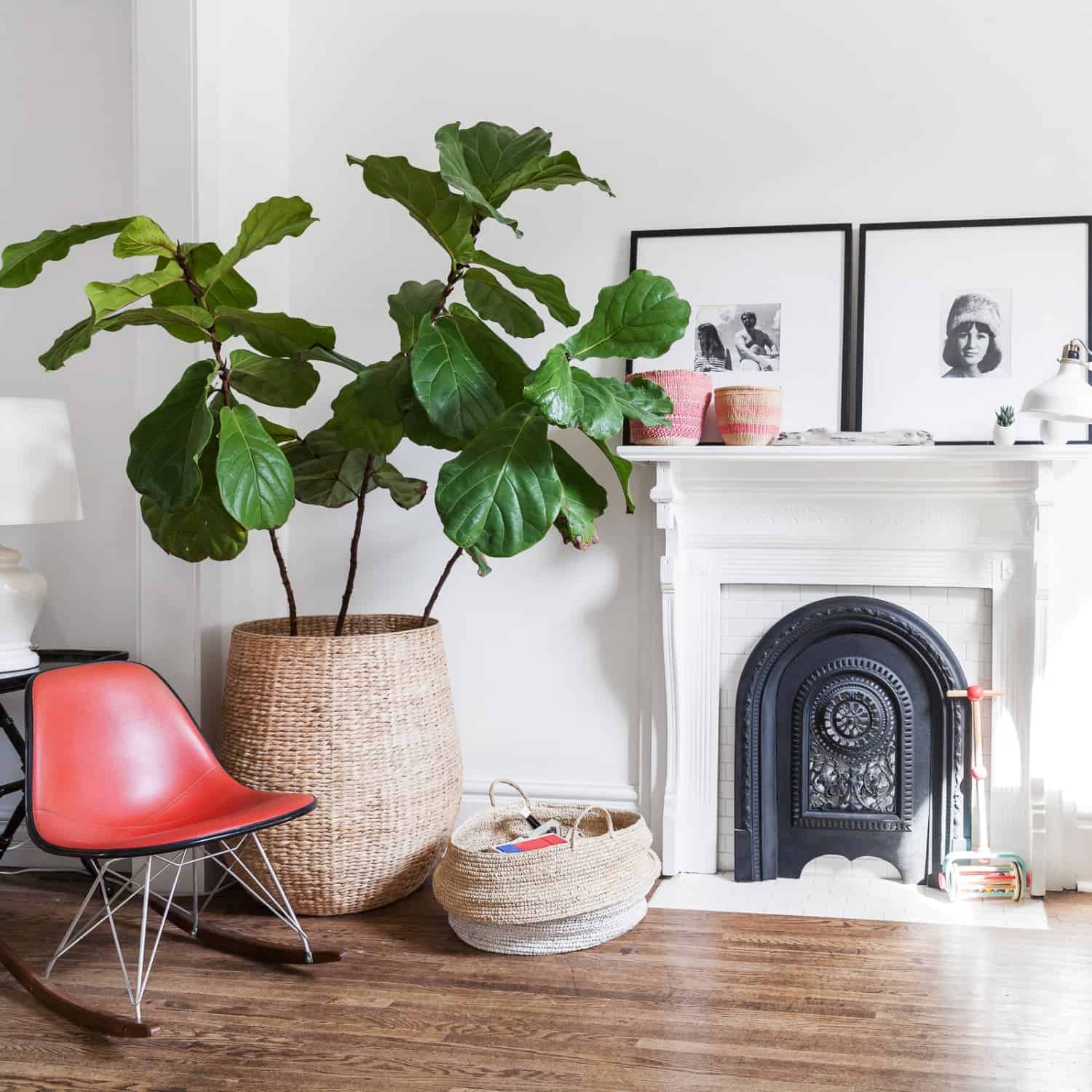
Image credit: apartmenttherapy.com
That said, it’s a bit of a drama queen. It loves bright, indirect light but will absolutely sulk if you move it too often, water it too much, or expose it to cold drafts. If it starts dropping leaves, that’s its way of telling you it’s not impressed with the care you’re giving. But once you get the routine down, it’ll reward you by growing tall, lush, and absolutely stunning.
2. Schefflera arboricola (Umbrella Tree)
If you want a plant that looks lush but doesn’t act like a spoiled celebrity, the Umbrella Tree is a solid pick. Its glossy, umbrella-like leaves fan out gracefully, giving it a full, rich look without being overly needy.
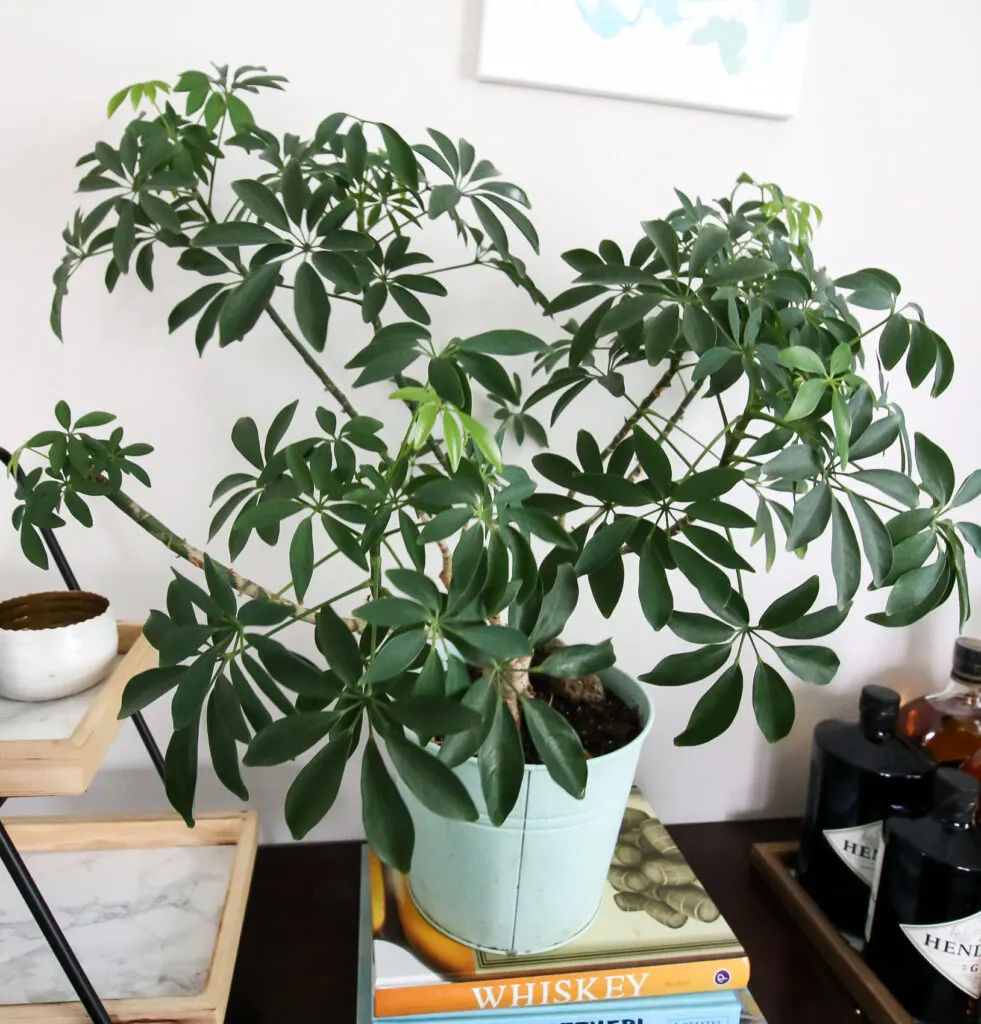
Image credit: keepyourplantsalive.com
This one thrives in bright, indirect light but won’t throw a fit if the lighting isn’t perfect. Just let the top inch of soil dry before watering again, and it’s good to go. If your air is drier than a desert, a little misting will keep it happy. It grows fast, fills vertical spaces beautifully, and is one of those plants that looks like you put effort into your home, even if you really didn’t. Truly, it could be the best plant for the bedroom.
3. Pachira aquatica (Money Tree)
- Is this a gift? Please choose "this is a gift" at check out to...
- The Money Tree is an easy-care houseplant that is said to bring...
- Add life to a brightly lit room at home, a lightly shaded porch,...
- The Money Tree grows best near a sunny window, not in direct...
- Height at shipping is approximately 16-Inches tall, measured from...
Looking for a plant that might bring good luck—or at least make your space look better? Enter the Money Tree. With its braided trunk and vibrant green leaves, it has a unique, almost sculptural look that makes it a conversation starter.
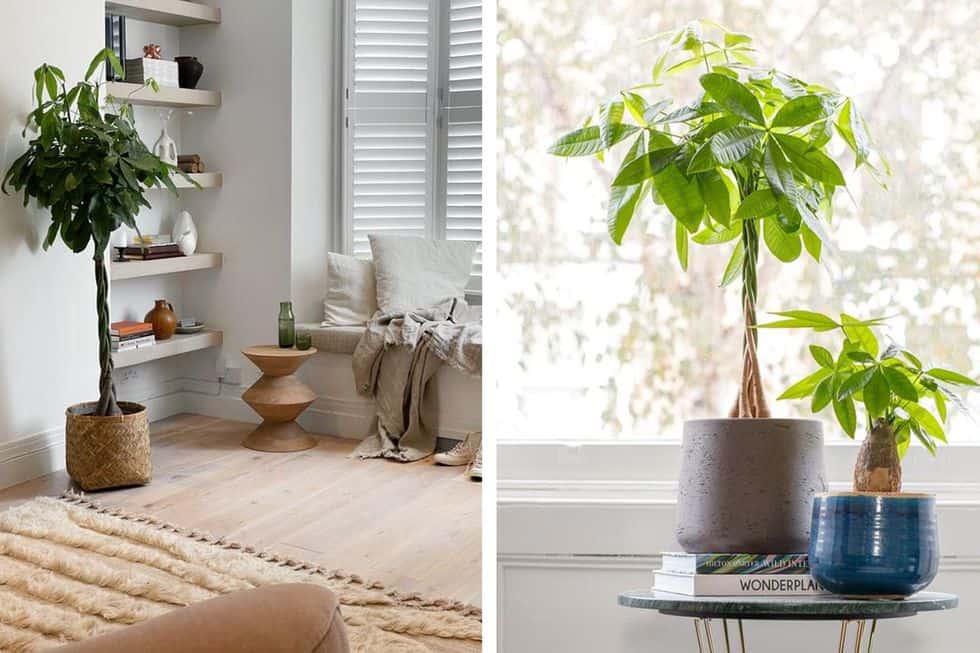
Image credit: housebeautiful.com
It does best in bright, indirect light but it can also be a low-light indoor plant if needed. Watering is simple—just don’t drown it. This plant hates soggy roots, so well-draining soil is a must. Even if it doesn’t magically increase your bank account, it adds a fresh, lively energy to any space.
4. Ficus elastica (Rubber Plant)
The Rubber Plant is another excellent choice for indoor gardening. If plants had personalities, it would be that effortlessly cool friend who never tries too hard but always looks great. Its thick, glossy leaves give it a polished, almost sleek appearance, making it a fantastic choice for modern spaces.
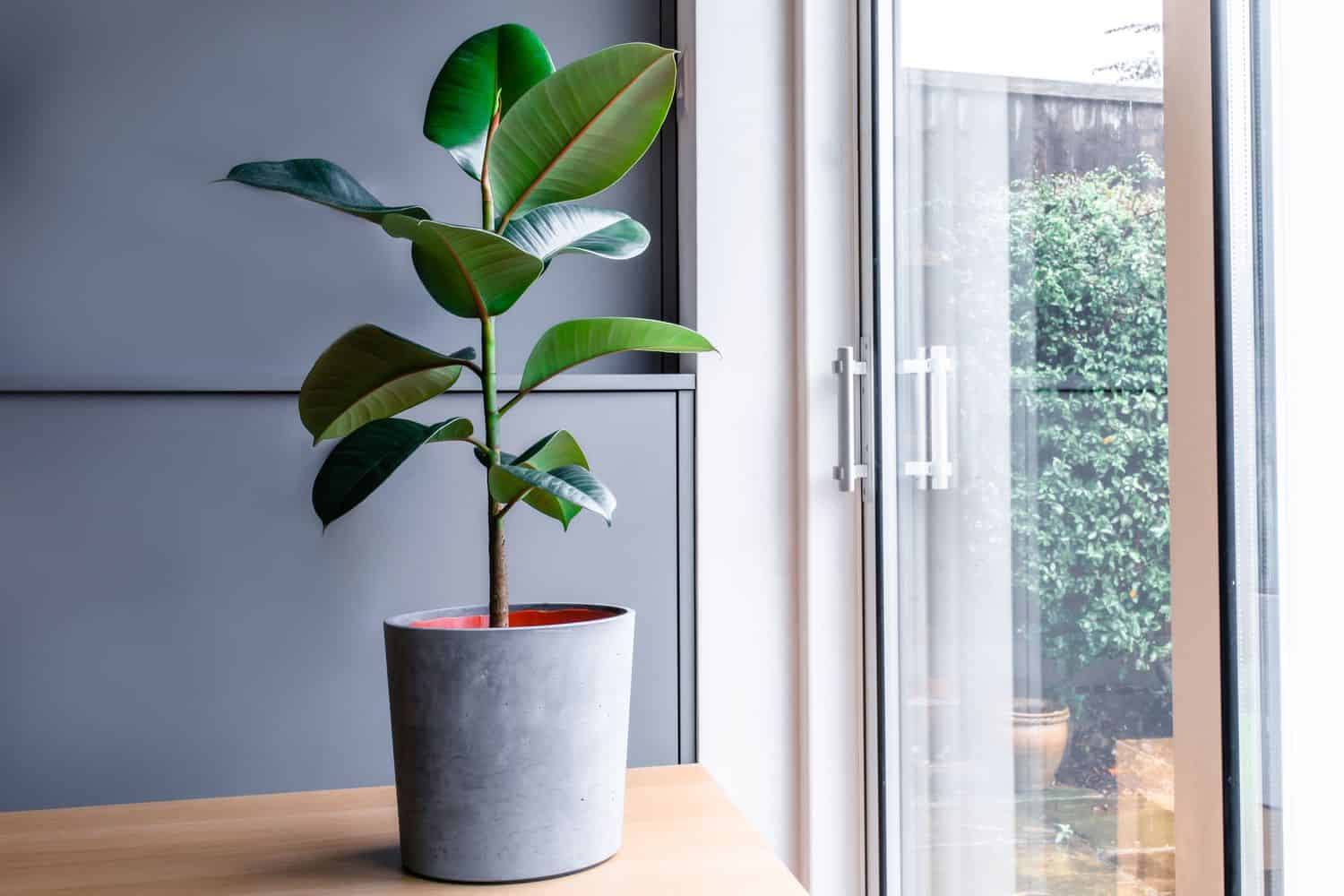
Image credit: thespruce.com
It’s not a fussy plant, which makes it perfect for beginners. It enjoys bright, indirect light but won’t panic in lower light conditions. Watering is simple—let the soil dry a bit before giving it a drink. If you’re the type who forgets to water now and then, this plant won’t hold a grudge. Over time, it can grow tall, turning from a leafy houseplant into a full-blown tree.
5. Chamaedorea elegans (Parlor Palm)
- Parlor Palm Tree: The Parlor Palm Tree, native to rainforests...
- Indoor Plants: Parlor Palm plants, also known as Neanthe Bella...
- Easy Maintenance: Chamaedorea Elegans plants are easy to care...
- Home and Garden Decor: Our Parlor Palm plant pot is perfect for...
- Health Benefits: Live plants purify the air in their surroundings...
For those who want a plant that whispers elegance rather than shouts for attention, the Parlor Palm is a perfect fit. With its soft, feathery fronds, it brings an easy, laid-back beauty to any space.

Image credit: thespruce.com
It’s also one of the least demanding plants out there. It handles low to medium light like a champ and doesn’t need much in the way of special care. Water it when the top inch of soil feels dry, and it’ll keep thriving. It’s the kind of plant that makes your home look effortlessly put together without requiring much effort on your part. Plus, it is one of those visually appealing indoor plants for your bathroom.
6. Chamaedorea seifrizii (Bamboo Palm)
Want something that looks tropical but isn’t a high-maintenance nightmare? The Bamboo Palm is an excellent choice. With its slender, bamboo-like stalks and lush green fronds, it brings a bit of a vacation vibe into your home.
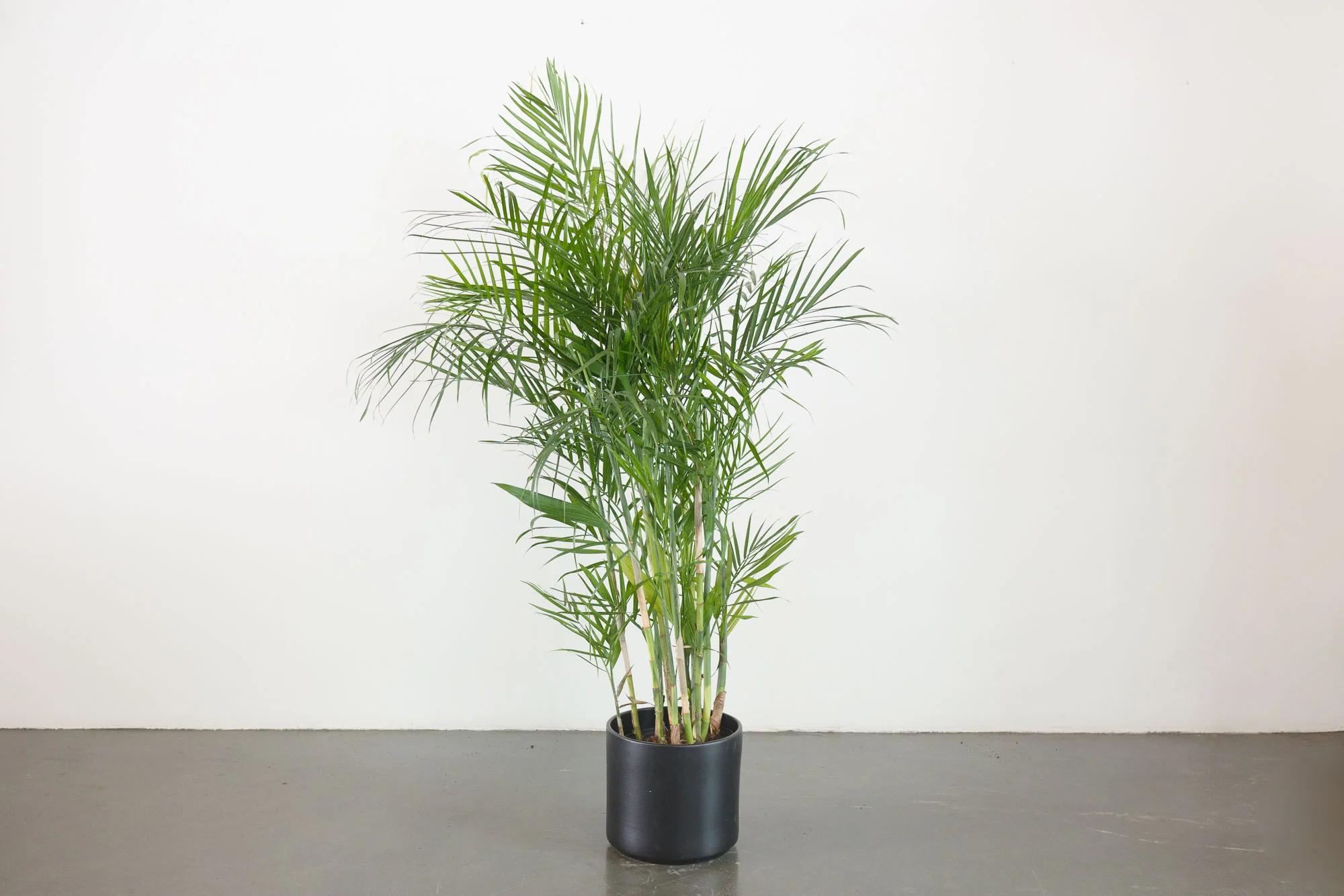
Image credit: plantshopseattle.com
It prefers indirect light but won’t throw a tantrum if it gets less than ideal conditions. Just keep its soil evenly moist (not soaked), and it’ll do its thing. Bonus: it’s a fantastic air purifier, so not only does it look good, but it also helps keep your indoor air cleaner.
7. The Meyer lemon tree (Citrus × Meyeri)
If the idea of plucking fresh lemons from your own indoor tree sounds appealing, the Meyer Lemon Tree might be your new favorite plant. Unlike regular lemon trees, these produce fruit that’s sweeter and less acidic, making them a fantastic addition to any kitchen.
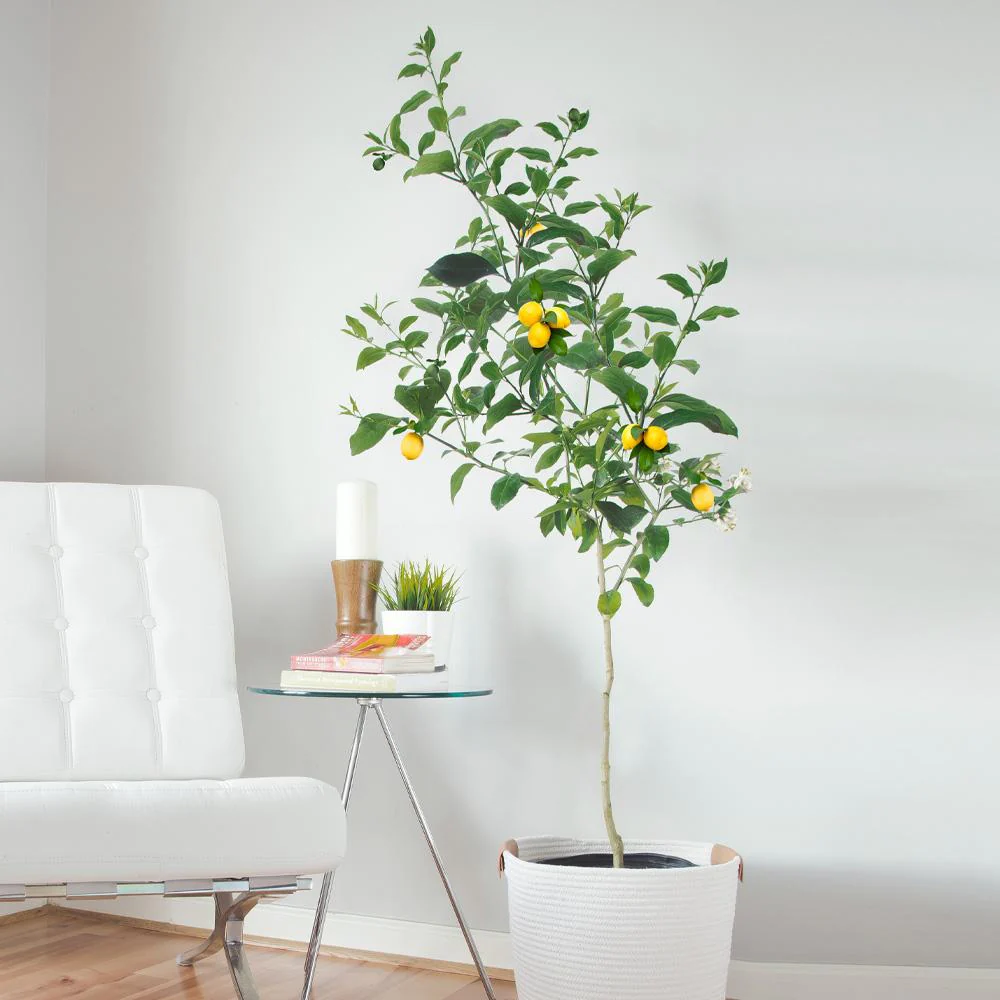
Image credit: fast-growing-trees.com
These citrus trees need bright light, ideally from a sunny window. They also love humidity, so if your home feels drier than a bone, consider misting the leaves or using a humidifier. If cared for properly, they reward you with fragrant blossoms and fresh lemons that taste way better than anything from the store.
8. Banana tree
For those who want to go all out with a big, bold plant, the Banana Tree is hard to beat. It’s got those massive, tropical leaves that instantly make a room feel alive and vibrant.
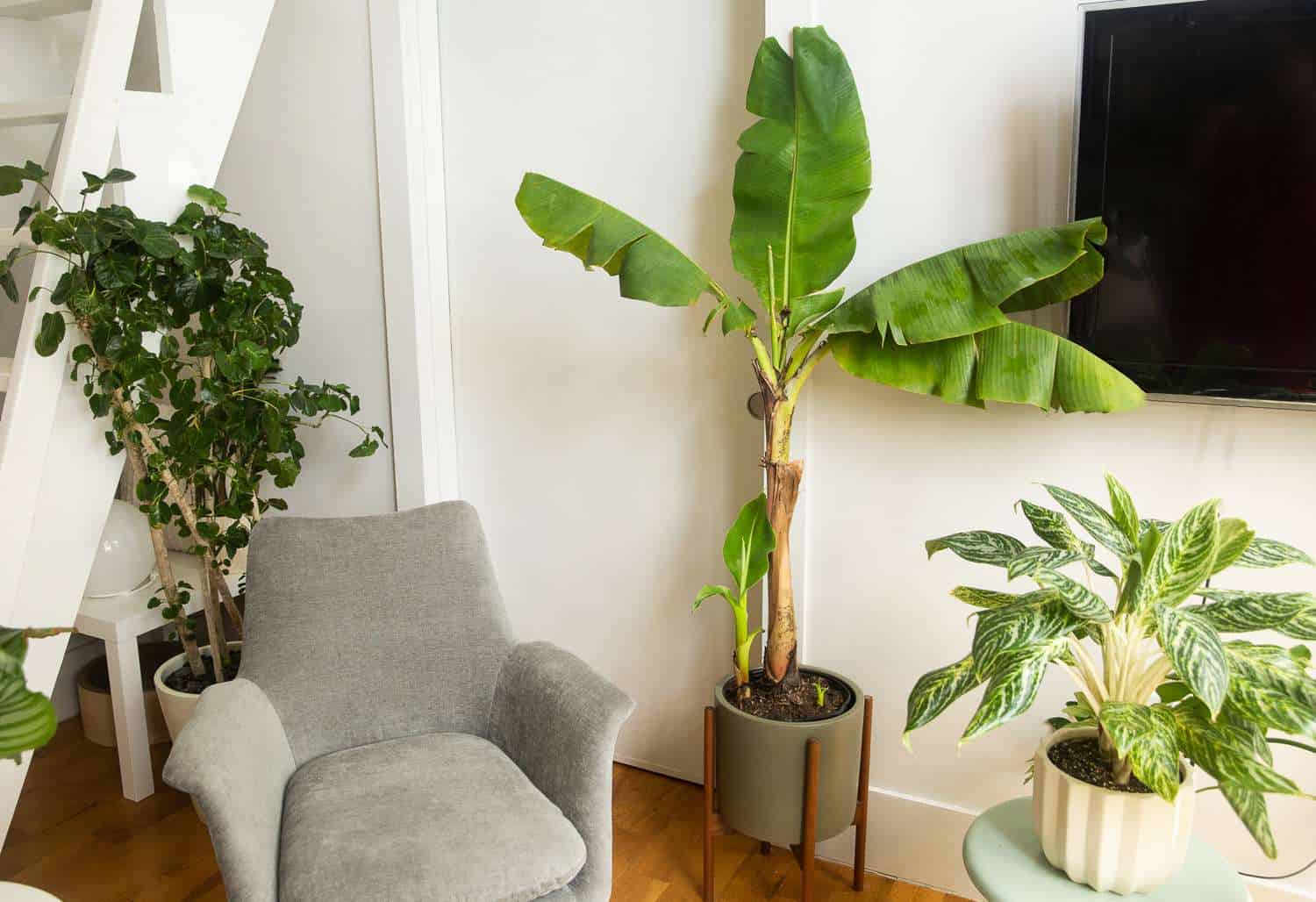
Image credit: thespruce.com
It loves warmth, humidity, and bright, indirect light. Keep its soil moist but not waterlogged, and it’ll thrive. While it probably won’t produce fruit indoors unless you have near-perfect conditions, it’s still a stunning plant that brings a lush, jungle-like feel to any space.
Benefits of Indoor Tree Plants
Indoor trees do a whole lot more than just sit there looking nice. Sure, they make a space feel more put-together, but they also clean the air, help you breathe easier, cut down on noise, and even make your home feel a little more alive. If you’ve ever wondered whether getting a tree for your living room or office is worth it, here’s why the answer is yes.
1. Air Purification
First off, let’s talk about air. The air inside your home might seem fine, but in reality, it’s full of invisible junk. Furniture, carpets, paint, and even some cleaning products release chemicals that linger around and get into your lungs. Trees don’t just sit around looking green—they actually filter out toxins like formaldehyde and benzene while also cranking out fresh oxygen. Snake plants, Peace Lilies, and Areca Palms are like natural air purifiers that don’t need to be plugged in or maintained with expensive filters.
2. Stress Reduction and Improved Well-being
Then there’s the whole stress thing. There’s a reason people go for walks in parks when they’re feeling overwhelmed—being around greenery helps calm the brain down. Even having a tree inside can do the trick. Studies show that looking at plants can lower stress levels, boost your mood, and even help you focus better. If your space feels a little tense or uninspiring, a leafy roommate might be exactly what it needs.
3. Increased Humidity
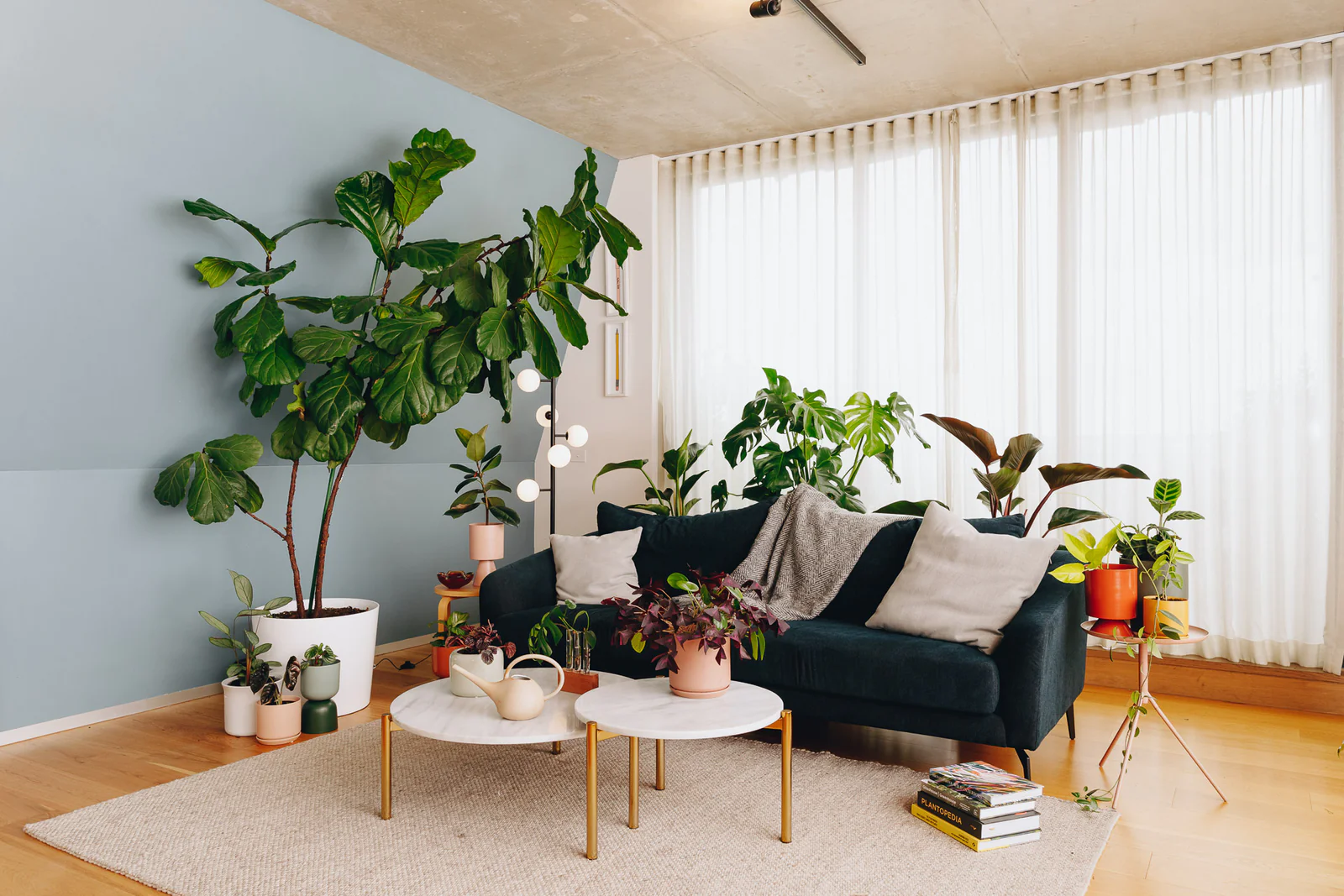
Image credit: theplantrunner.com
Another bonus? Indoor trees act like tiny humidifiers, which is a lifesaver if you ever wake up with dry skin or feel like your sinuses are permanently dehydrated. Especially in the winter when heating systems suck the moisture right out of the air, plants release water vapor as they breathe. This helps keep the air from turning into a desert and makes life a little more comfortable.
4. Noise Reduction
If noise is an issue, trees can help with that too. Their leaves and branches absorb sound waves, which means they actually make a room feel quieter. If you live in a loud apartment, have neighbors who don’t understand the concept of volume control, or just want a more peaceful space, a well-placed tree can take the edge off.
5. Aesthetics and Interior Design
And let’s not ignore the fact that they just make a space look better. A big, leafy tree instantly makes a room feel more intentional, stylish, and warm. Fiddle-Leaf Figs, Kentia Palms, and other large indoor plants add height and texture to a room without feeling like clutter. It’s one of those design tricks that works every time—no effort required.
6. Connection with Nature
Last but not least, there’s something really satisfying about taking care of a plant and watching it grow. Even if you don’t have a backyard, an indoor tree lets you bring a little bit of nature inside. You water it, you move it to a better spot if it looks sad, and over time, you start to feel a weird sense of pride when new leaves start to pop up. It’s a small, simple thing, but it can make a space feel more alive.
Caring for Indoor Tree Plants
Indoor trees aren’t demanding, but they’re not invincible either. Get the basics right, and they’ll thrive for years. Ignore them completely, and they’ll definitely let you know they’re unhappy. Here’s what you need to know.
1. Light Requirements
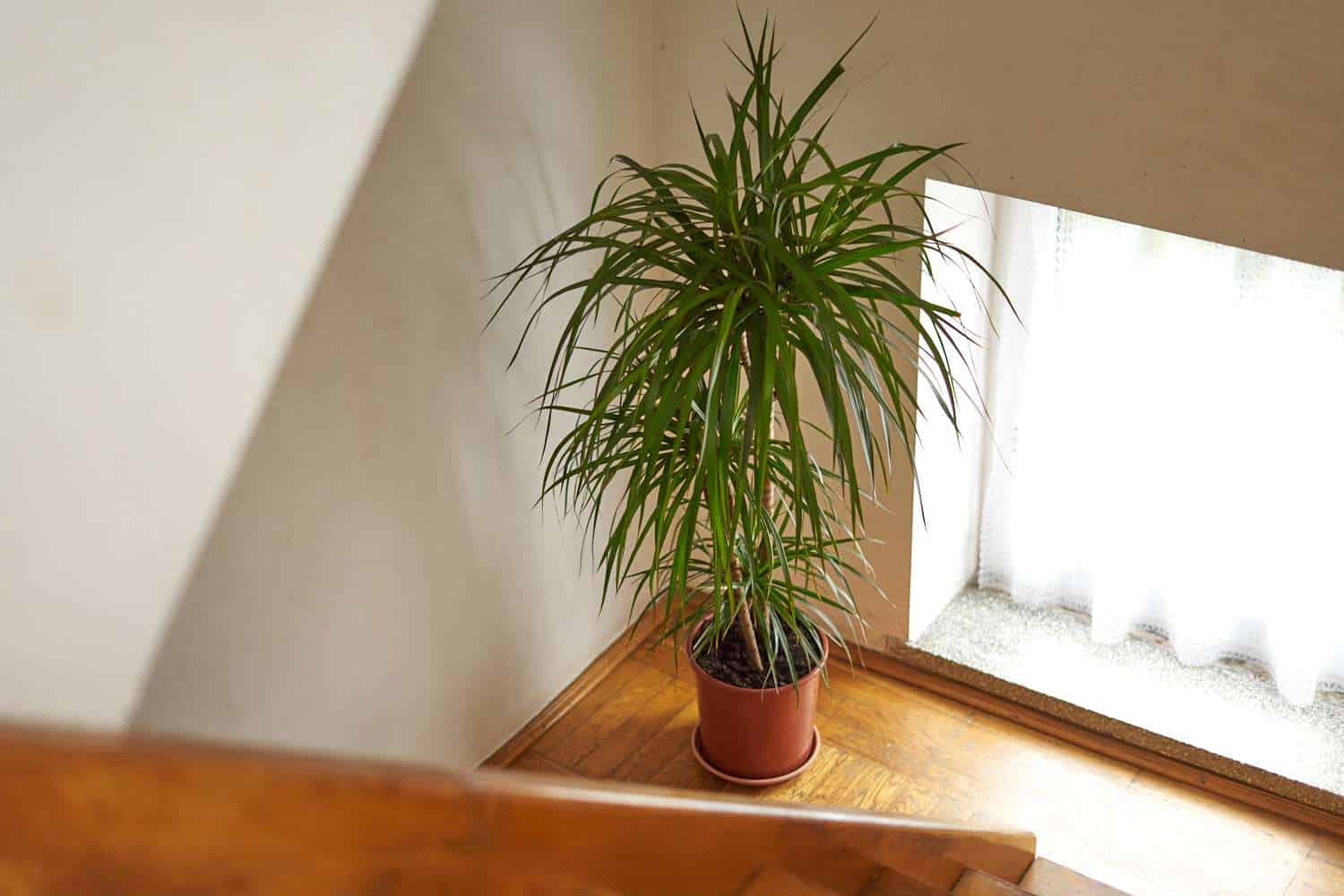
Image credit: treehugger.com
Light is everything. Some trees love soaking up direct sunlight all day (like the Fiddle-Leaf Fig), while others prefer a more shaded, indirect glow (like the Cast Iron Plant). Put a shade-loving plant in full sun, and it’ll scorch. Stick a sun-lover in a dim corner, and it’ll start stretching and drooping like it’s searching for the light (because it is).
Moral of the story? Learn what your tree wants before you pick a spot.2. Watering
People tend to overestimate how much water their plant actually needs. Too much water = root rot. And once root rot sets in, it’s usually game over. The key is to check the soil. If the top inch is dry, go ahead and water. If it’s still damp, leave it alone. Some trees like their soil to dry out a bit between waterings, while others prefer consistently moist soil—again, know your plant.
3. Humidity
If your indoor tree starts developing crispy brown edges, it’s probably craving humidity. Some plants, especially tropical ones, need more moisture in the air to thrive. You can help by misting the leaves, placing a tray of water near the plant, or running a humidifier. Even grouping plants together can create a tiny microclimate that keeps them happy.
4. Temperature and Environment
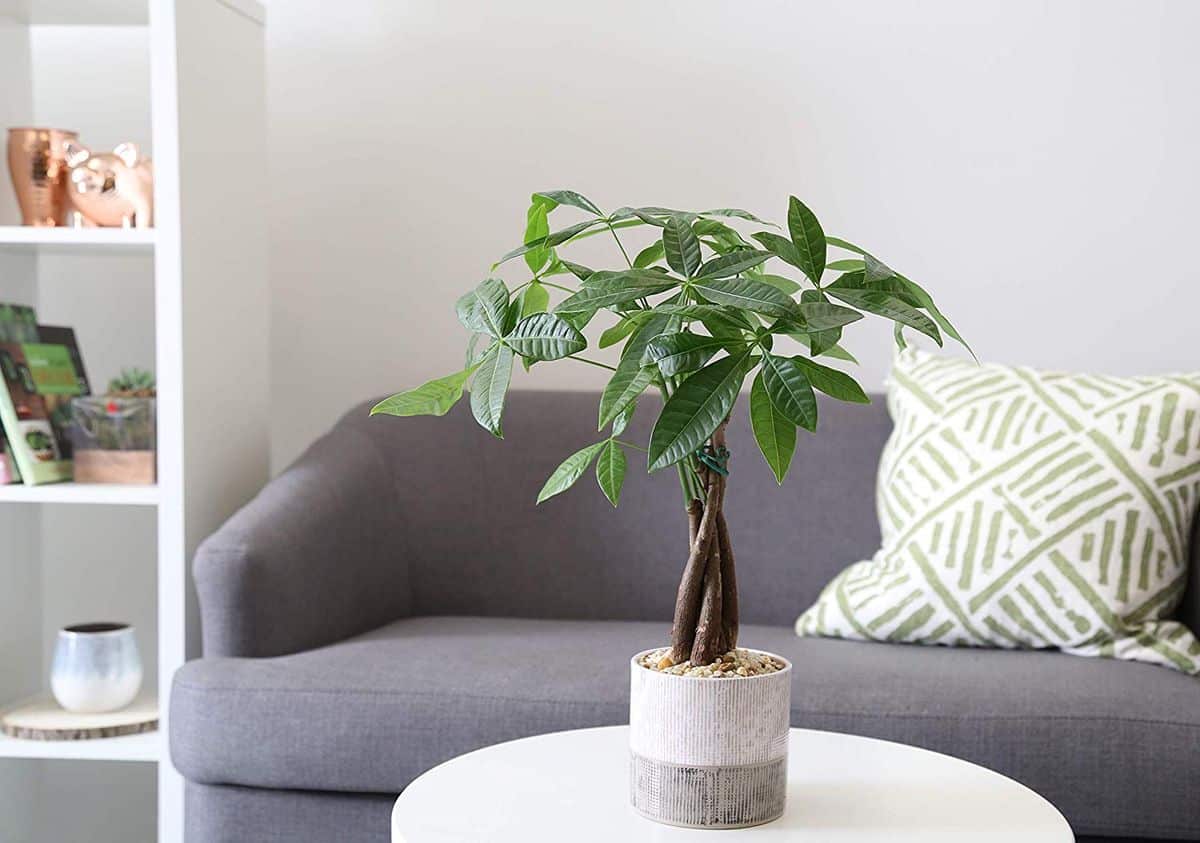
Image credit: housebeautiful.com
Indoor trees don’t like surprises. Sudden temperature changes—like blasts of cold air from a drafty window or heat from a vent—can stress them out. Try to keep the temperature between 60-75°F, and don’t put them too close to radiators, air conditioners, or doors that open frequently in winter.
5. Fertilization
Your indoor tree isn’t getting nutrients from the ground like an outdoor tree, so it needs a little boost. Use a balanced, water-soluble fertilizer during the growing season (spring and summer). But don’t overdo it—too much fertilizer can build up in the soil and damage the roots.
6. Pruning and Maintenance
Every once in a while, trim off any dead or yellowing leaves. This keeps the plant looking fresh and encourages healthy growth. Also, dust the leaves. Seriously—dust buildup blocks light absorption, making it harder for your plant to do its thing. A quick wipe with a damp cloth now and then makes a huge difference.
7. Repotting
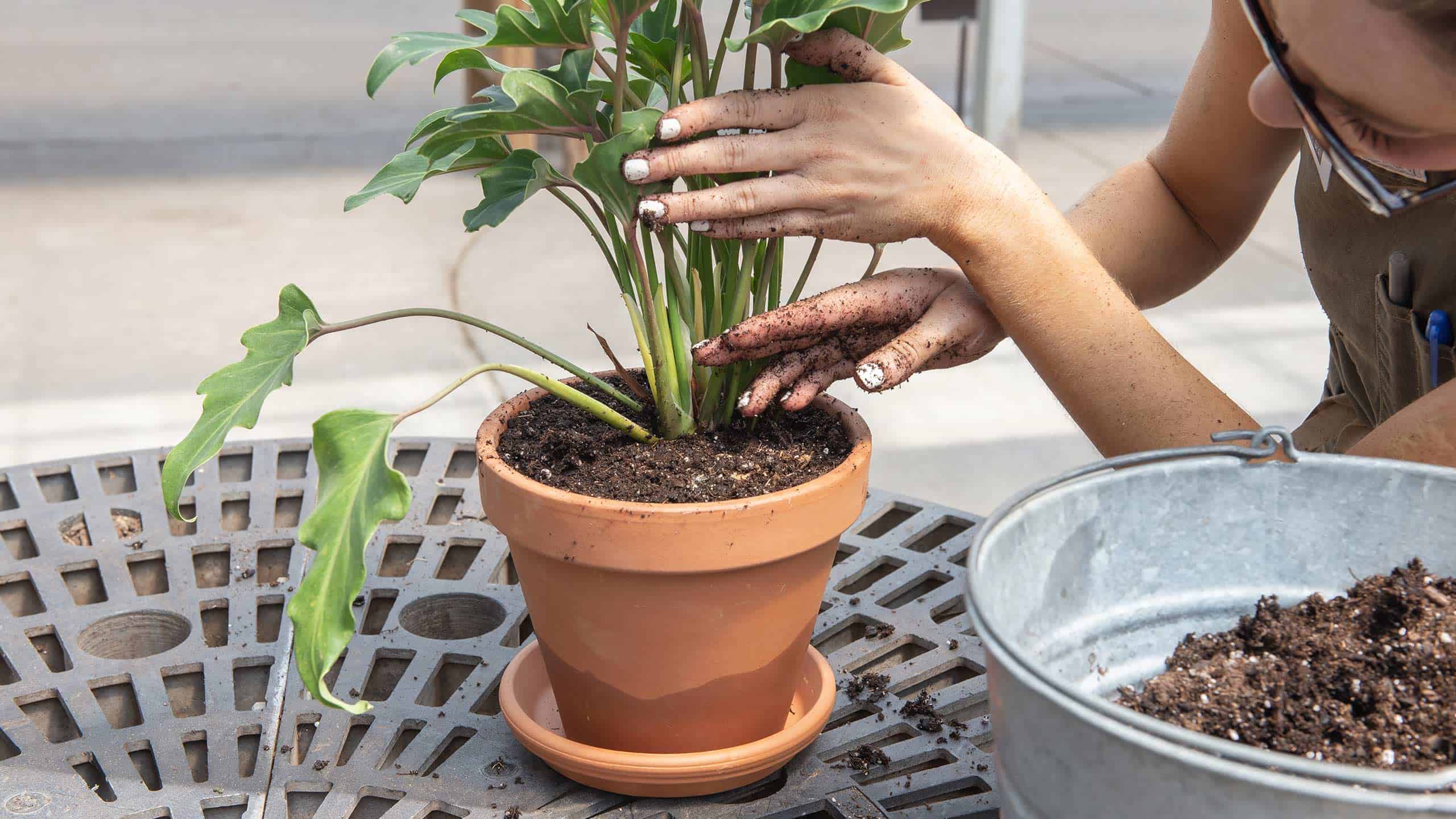
Image credit: mulhalls.com
If you notice roots growing out of the drainage holes or your plant’s growth has slowed down, it might be time for a bigger pot. Choose one just slightly larger than the current one—too big, and the soil will hold too much moisture, increasing the risk of root rot. Repotting gives your tree fresh nutrients and room to grow, but expect a short adjustment period afterward.
Conclusion
Bottom line—indoor trees do way more than people realize. They clean the air, make rooms quieter, add moisture, help with stress, and make any space look ten times better. If you’ve been on the fence about getting one, just go for it. Your future self will thank you.










